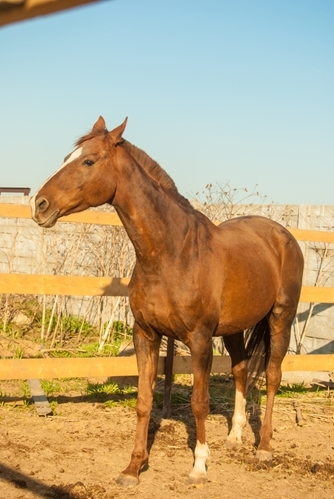The disease known as pigeon fever has seen an uptick in cases this summer. The condition actually has nothing to do with pigeons, but rather is caused by a Corynebacterium pseudotuberculosis infection. This bacteria lives in the soil and is thought to infect horses through biting flies. An emerging threat to horse health, pigeon fever manifests as internal abscesses, external abscesses or ulcerative lymphangitis. With the drought conditions in California creating an extremely arid environment in which the bacteria thrive, it is more important now than ever to take preventative measures in protecting your horse from contracting pigeon fever.
Identifying abscesses
Pigeon fever is so called because the symptomatic external abscesses characteristic of the disease are usually found on the horse’s chest. As a result, the pectorals become inflamed, giving the horse a pigeon-breast appearance.
The most common treatment for these external abscesses is lancing and draining. If left alone, these abscesses will rupture on their own, but doing so runs the risk of contaminating the local soil. As such, many veterinarians elect to drain the abscess into a disposable bucket, thus precluding the risk of widespread contamination.
Not just California
It is often assumed that pigeon fever is a disease that only affects California horses. While the dry conditions in California are particularly well-suited to C. pseudotuberculosis growth, cases of pigeon fever have been reported as far east as Virginia and north as Alberta, Canada. As such, horse owners from around the country need to remain on guard for potential pigeon fever outbreaks on their farms.
Preventative measures
Since biting flies are thought to be the main culprits in the spread of pigeon fever, insect control is one of the best preventative measures. In addition, be sure to practice good sanitation practices to prevent spreading the bacteria. If one of your horses becomes infected, be sure to clean out their stall and then disinfect the tools you were using. In addition, keep that horse in limited quarantine. Minimizing its contact with other horses consequently minimizes the likelihood of the bacteria spreading. In addition, avoid any operations that require opening of the skin. These types of procedures, such as gelding, provide an entryway for the C. pseudotuberculosis bacteria that can develop into pigeon fever. After infection, it may be weeks or even months before any symptoms become apparent.
As with any disease, be sure to contact your veterinarian at the first sign of a possible case of pigeon fever.









